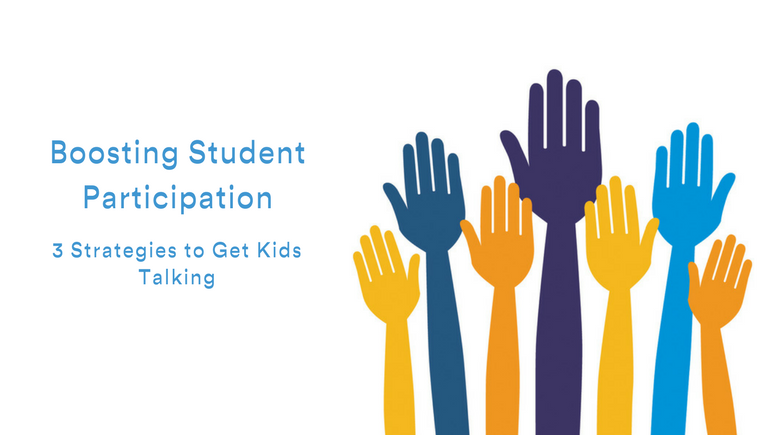
One of the most challenging aspects of teaching is getting all students to participate.
On the best days hands shoot up in response to a question but on the worst days, it can feel like pulling teeth. And in my years of teaching, there were plenty of these teeth pulling moments.
There are lots of reasons kids don’t participate.
Sometimes they’re shy or get anxiety about speaking in public.
Other times they don’t know the answer or lack confidence in their ability to get it right.
And some kids might choose not to participate because a question is too easy. What’s the point of raising your hand to answer something that seems so obvious?
Rhonda Bondie, a lecturer at the Harvard Graduate School of Education, believes she has the solution. Bondie’s work is specifically designed to help students feel valued and become engaged in the classroom, and she has developed a number of strategies to promote student participation.
In a recent session she gave, Bondie shared a toolbelt full of tips and tricks for getting all students actively engaged and participating in class. Keep reading for a few of my favorites.
Think, Pair, Share
It may be one of the oldest teacher tricks in the book, but this routine is a classic for a reason – it works!
After posing a question to the class, give students a set amount of time (it can be as short as 30 seconds) to think about their answer to the question.
Then, give students a slightly longer amount of time to pair up with the person next to them and talk about their answer. Did they agree? How could they make their answer stronger?
Finally, call on one or a handful of students to share out what they and their partner discussed.
This move is a great way to get students who are timid or lack confidence participating because they have the chance to talk through their ideas with just one partner before they share it out with the whole class.
Domino Share
This routine helps groups share efficiently, giving each person a chance to participate. This strategy gets its name because students will share quickly one after the other, just like falling dominos.
Have students seated in small groups (3 – 6 students). Each seat at a group should be labeled with a letter (A, B, C, etc.).
Students start by working in their group to answer a question with multiple correct answers. Maybe they are making a list of the causes of World War I, or characteristics of a mammal.
After a designated amount of group time, the teacher announces that it is time to share out and chooses a letter to share. One at a time, the student who has that letter at each table shares out one of the group’s answers.
Since students can’t repeat what another group has already said, they need to listen carefully to what each group shares.
This process can be repeated with as many questions as you like, and each time the teacher calls a new letter to share out from each group.
Not only is this more efficient than calling on raised hands to share, but it also ensures that everyone speaks, not just the kids who voluntarily participate.
Rumors
This is a great one for tackling the student who doesn’t participate because he’s always on the verge of dozing off.
With rumors, students get to move around, engage in conversation, and all talk at the same time, so they don’t have to wait for their turn.
Sounds chaotic? It is. But, it’s a form of organized chaos that can be incredibly effective.
Have students individually write down their answer to a question on a post-it note (remind them to write neatly!)
Have all students stand in a circle and tell them that you’ve been hearing a lot of rumors about “whatever the topic of their question was”.
Tell participants that they are going to spread their rumor by pairing with another student, reading their post-it note, listening to their partner’s answer, and then exchanging post-it notes.
Once they’ve completed these three steps (tell, listen, exchange or listen, tell, exchange) have students go find a new partner.
Try to let students share rumors with around three different partners.
Once the rumor portion ends, you can engage students in sharing ideas and drawing conclusions in a number of ways.
Have them find other classmates whose post-its say the same thing as the one they’re holding.
Or if the question was opinion based and there are lots of different answers, have students group them into categories that are related to one another on the whiteboard.
The possibilities for where this activity will take you are endless. Check out a video here if you’d like to see the strategy in action.
Will it be loud? Yes. Will all students be involved in academic conversation? Yes!
What other strategies do you use in your classroom to get reluctant participators to become more engaged in class?



I like all the systems to be in one: Think, Pair( pairing or domino share system, because you do already a grouping or pairing system), Share( through rumors student already share their thoughts) in student participation,
-a teacher should give time and remind his students to think about ‘what was the story talked about’.
– a teacher creates a grouping about 3-6 students but there should a team leader (a teacher should select a team leader) for instant collection and perfect arrangements of events from the story. So that, the less fortunate student of absorbing the knowledge can cope through instant repetition of what’s(what was) going on.
-rumors, a teacher should let them talk until others can recover the learning they need .
All are okay. Thanks for reminding me that way.